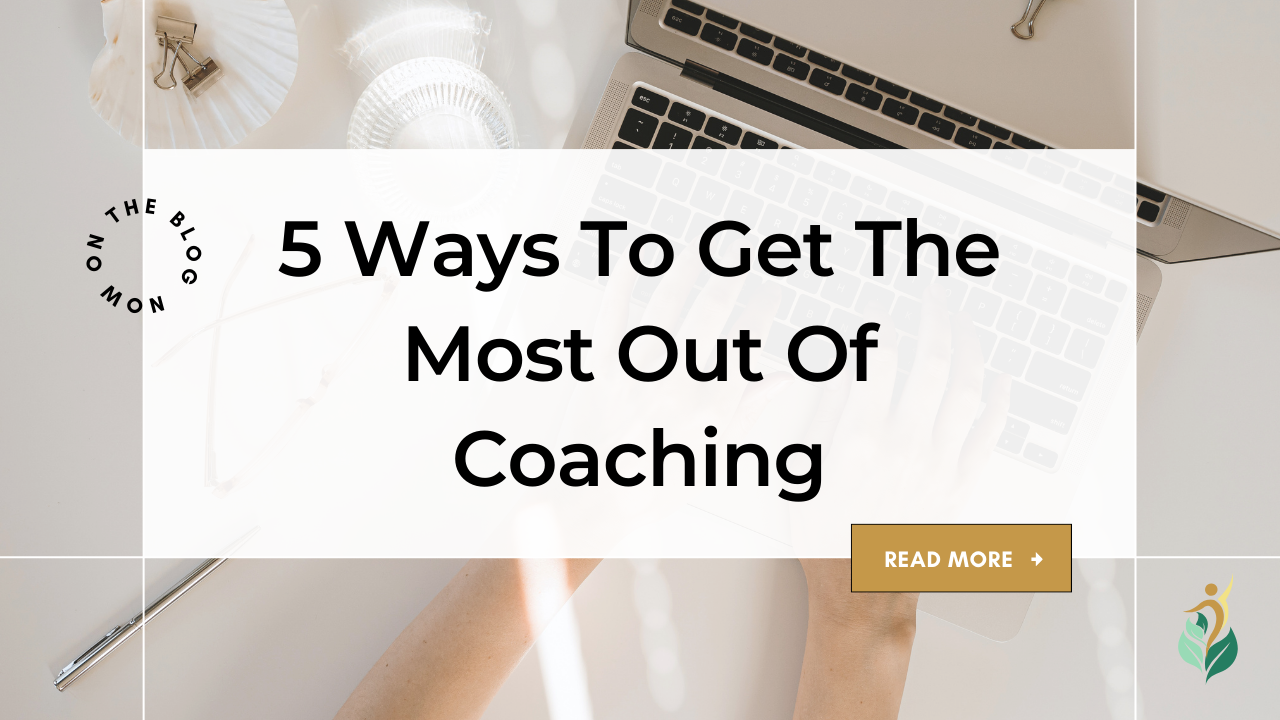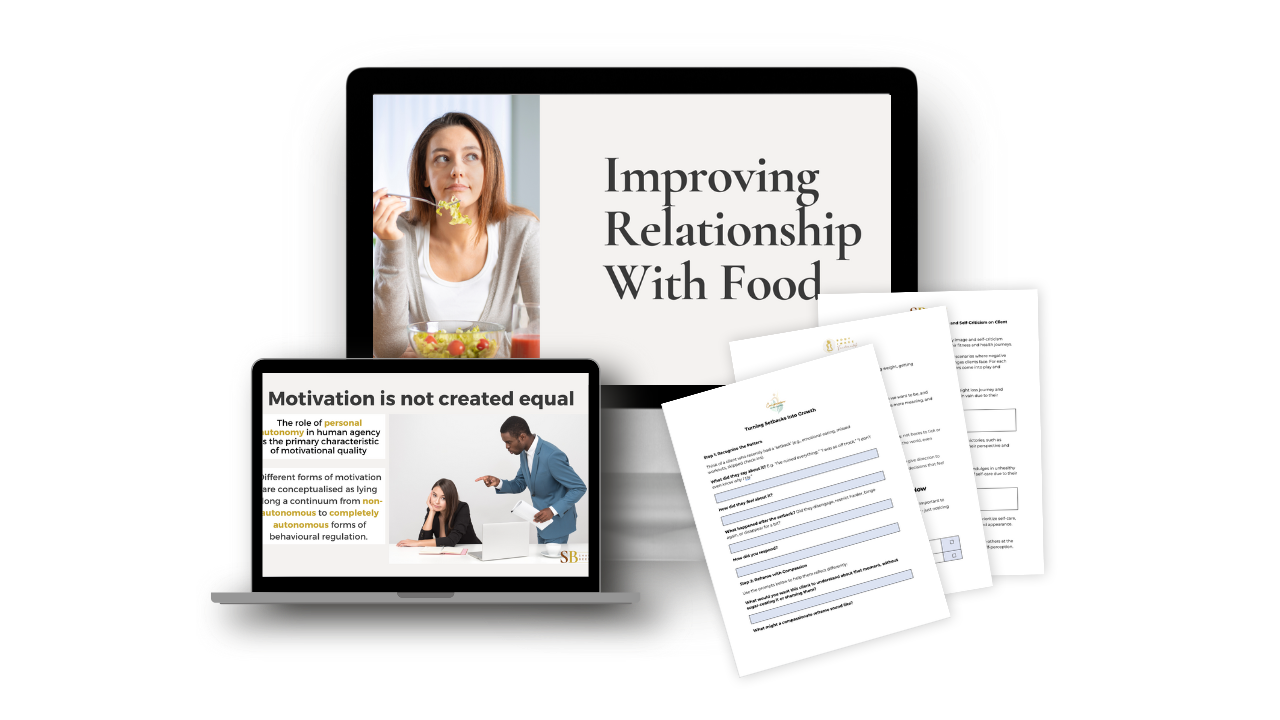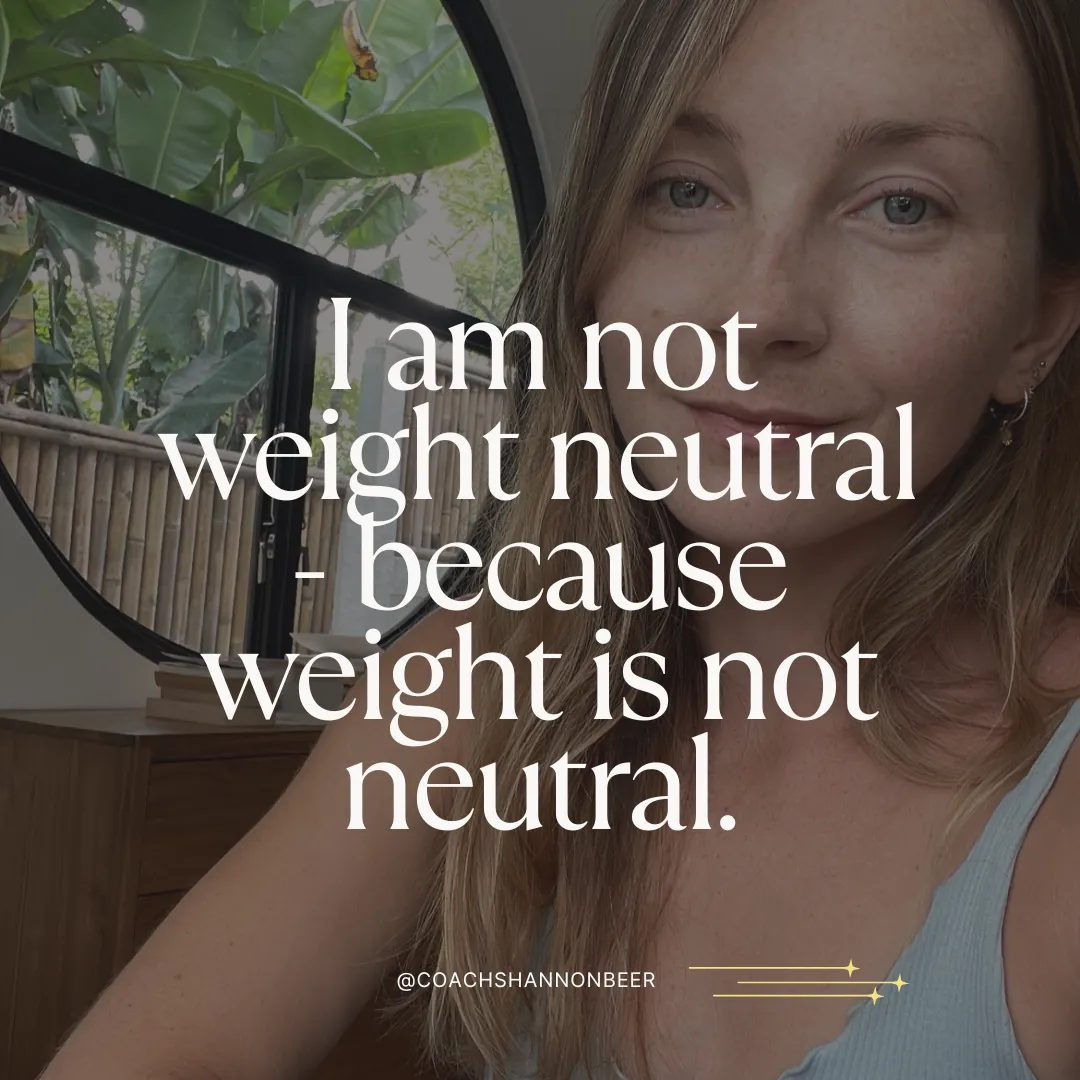How to Eat Healthy Without Macros
Feb 18, 2024
How to Make Healthy Food Choices Without Macros
Eating a well balanced diet helps us to feel our best. But for many of us, this can become a source of stress. This article will help you learn how to create a balanced plate without tracking macros or counting calories, so you can make sustainable choices without overthinking it.
To plan a week’s worth of balanced meals, you can download the free Create Your Balance Meal Planner HERE!
Pros and Cons of Tracking
For someone who has a solid relationship with food and their body, macro tracking may be an effective way to ‘optimise’ for sports performance goals.
In my opinion, that’s about the only time I believe tracking to be helpful. And most people do not fall into that category, yet macro tracking has become the industry norm. Spoiler alert, flexible dieting is not actually an evidence-based to support a healthy relationship with food. You can read all about the research HERE. It's easy to teach, so that's why coaches tend to use it as band-aid solution for everyone.
I don’t recommend tracking for most people as it’s often not necessary or even helpful. Most people turn to tracking to lose fat, without addressing the reason why they are struggling to eat well in the first place. If you tend to eat in response to emotions, macro tracking doesn’t stop you from going over your goals for the day. People learn to compensate and restrict the following day, instead of building emotional regulation skills.
Another common situation where I see clients get hung up on tracking is when they have a lot of self worth tied to how they look, and use macro tracking as a tool to control their body composition. Sure this ‘works’ in the short term, because it helps you avoid actually developing a secure sense of worth that isn’t dependent on how you look, but it also comes with a lot of rigidity and anxiety about eating out and going ‘off track’.
For a more detailed dive into the pros and cons, you can listen to THIS podcast episode.
For many of us, macro tracking can a distraction from working on what’s important. There are simpler and more effective ways to make healthy food choices and live your best life. When you work on these things, macro tracking simply becomes redundant, unless you decide to get super serious about some sports-specific goals. Either way, a strong foundation of self worth + emotional regulation skills is necessary.
So let’s get onto the alternative!
Creating A Balanced Plate
You don’t have to count macros in order to balance your meals. A much simpler way to eat well is to focus on including the three key food groups with each meal.
The key food groups are protein, carbohydrates, fats and micronutrients (fruits and veggies). It’s important to get a balance of each of these nutrients in all of your meals. Portion sizes can vary depending on your needs, so here are two plates I recommend choosing between to get you started:

If you are active and are looking to support your performance, choose the plate on the left with 50% carbohydrates. If you’re more sedentary and you’re looking to support your health, try the plate on the right with a 33% split.
Let’s explore the benefits of each of these food groups.
Protein
Your body uses protein to build and repair body tissues, and it’s an important nutrient if you’re looking to maximise muscle growth and recover from training. With that said, this is the one macro-nutrient that the fitness industry can get a little obsessive about! Whilst I am a fan of a protein pudding every now and then, no macronutrient needs to be placed on a pedestal.
Benefits of protein include:
- Healing: Your body uses it to build and repair tissue.
- Satiating - this can be a pro and a con depending on your body’s needs!
- Supports hormone regulation by providing the body with amino acids

Carbohydrates
Carbohydrates are the body's primary and most efficient fuel source, used by our muscles, central nervous system and brain. We need a regular supply of carbohydrates to ensure our brain runs properly. Not eating enough carbohydrates, or having long gaps in the day without carbohydrates can make it difficult for us to concentrate properly, make decisions, plan ahead, or even regulate our emotions.
Other reasons to eat carbohydrates include:
- Energy! If you tend to go for low-carb options and you’re often fatigued, you may want to focus on consuming more of this nutrient.
- Carbohydrates can be a great source of dietary fibre, which helps to maintain bowel health and stabilise blood sugar levels.
- Protecting muscle tissue: Having adequate carbohydrate in your diet ensures that any protein you consume is used for its primary purpose (muscle growth and maintenance) rather than being redirected to perform the function of the carbohydrates.
- Sports performance. If you want to make progress, you need energy to train!

Fats
Fats are an essential nutrient for good health, yet tend to be the food group we develop to most fear around when we realise they’re 9 calories per gram. If you have learned to opt for low-fat everything (spray oil, egg whites only, fat-free dairy only) then it may be helpful to increase your fat intake.
Fat is important part of a balanced diet because:
- Fat plays an important role as an energy store which the body can use if energy is required.
- Our body cannot create essential fatty acids on its own (like linoleic acid and alpha-linoleic acid), meaning we have to get them from our diet, otherwise vital functions would be compromised.
- Fat is a carrier for fat-soluble vitamins (A, D, E and K). Without sufficient dietary fat, we cannot absorb these nutrients.

Fruits & Veg
Fresh or frozen, all fruits and veggies are good fruits and veggies! If you’re coming from a restrictive background, you may have learned to rely on fruits and veggies to fill you up. With the Balanced Plate approach, I recommend aiming for around ¼ - ⅓ plate of fruits and veggies per meal. Whilst it’s important to get fruits and veggies in our diet, it’s equally important not to skip out on other macronutrients. Make sure you’ve got a balance of all the 4 groups with each meal!
Ideas for enjoying fruits and veggies:
- Add some fruit to your salsa! I love a simple mango, avocado, red onion and cilantro mix on top of tacos.
- Choose mixed varieties. I like mixed frozen berries on top of my oats in the morning, or a mixed bag of stir fry for a quick dinner with noodles, nuts and a protein source!
Bonus: Spices and Herbs
When creating your Balanced Plate, I recommend having some fun with the spices and herbs. If you’re from the UK like me, you may have not ventured far from salt and pepper… and there’s a whole variety of seasonings to explore! Not only do spices and herbs add a lot of flavour, they’re also a great source of phytonutrients which have a lot of health-boosting properties.
Ideas:
- Add some cinnamon to your oats for extra flavour. The best oats I ever had were cooked for me by a lovely family in Singapore. They were slow cooked on the hob with cinnamon, cardamom, ginger, allspice and nutmeg, with some walnuts and raisins for good measure. I microwave my oats for convenience most days but every now and then I like to make the time to use the hob - they taste so much better!
- Make your life easy and buy a mix: curry powder, cajun seasoning and herbs de provence are versatile options.
- Cook your veggies in garlic and add a dash of ginger or cayenne pepper.
What About Snacks?
Most people would benefit from 1-3 snacks per day. Going too long without eating is a recipe for getting overly hungry and over-consuming at your next meal. We need snacks to sustain our energy, keep our blood sugar levels balanced, support our recovery from exercise etc. A good rule of thumb is to combine at least two food groups with each snack.

If this is a lot to take in, don’t worry!
To help you create a balanced plan for a full week of eating, I have put together the Create Your Balance Meal Planner. It’s totally free and easy to use!
Simply choose from each food group to create your meals, pop them into the weekly planner and your grocery list will automatically populate so you know exactly what to buy to set yourself up for a nourishing week:

You can download the planner HERE!
For individualised guidance and support with following through, check out your options at EMPOWER Coaching HERE.

Stuck In All Or Nothing Mode?
Your mind isn’t broken; it’s just running on autopilot.
Take the free Emotion System Audit and learn what's driving your patterns - and what to do when you feel overwhelmed or out of control.









